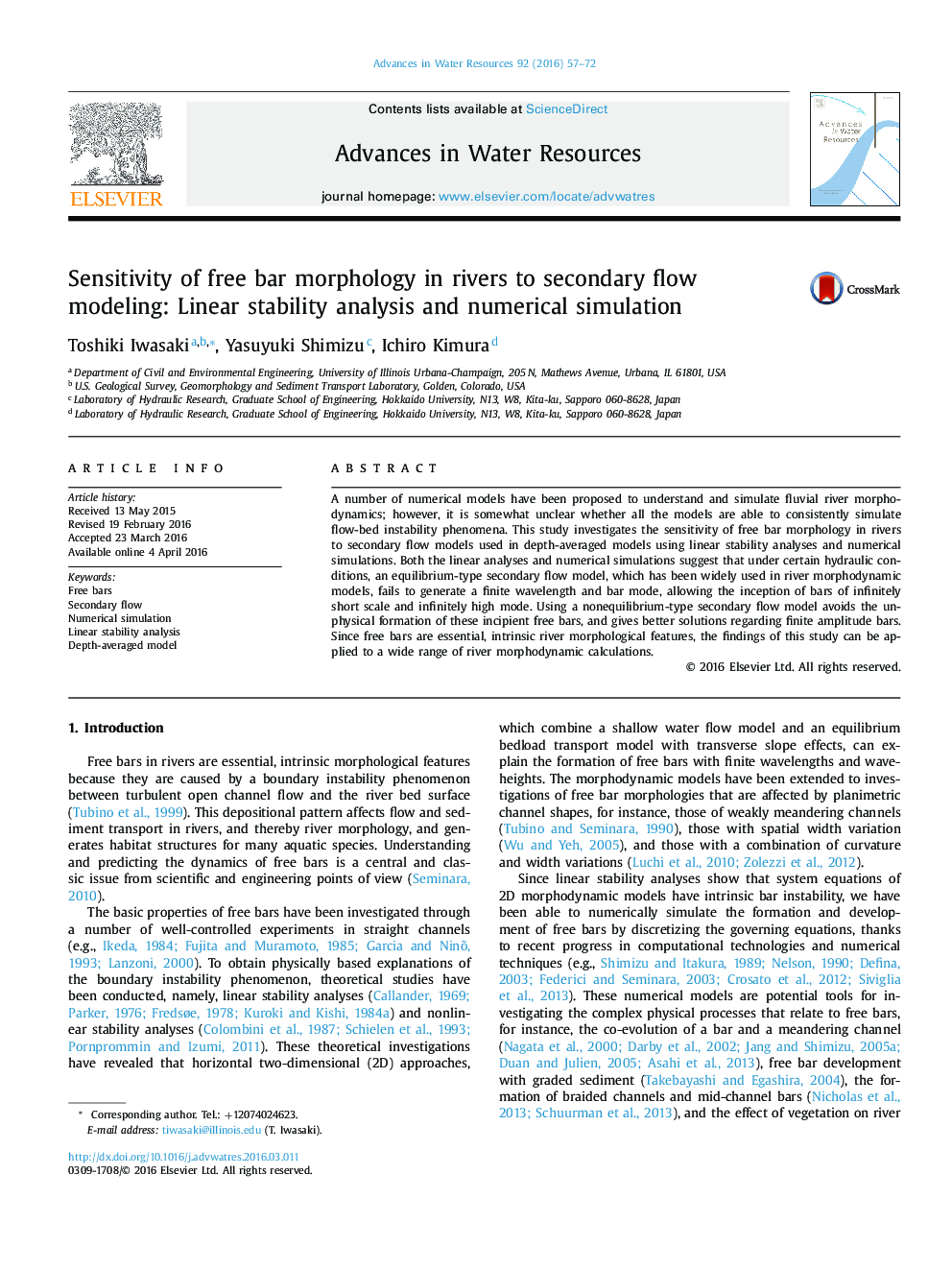| Article ID | Journal | Published Year | Pages | File Type |
|---|---|---|---|---|
| 6380805 | Advances in Water Resources | 2016 | 16 Pages |
Abstract
A number of numerical models have been proposed to understand and simulate fluvial river morphodynamics; however, it is somewhat unclear whether all the models are able to consistently simulate flow-bed instability phenomena. This study investigates the sensitivity of free bar morphology in rivers to secondary flow models used in depth-averaged models using linear stability analyses and numerical simulations. Both the linear analyses and numerical simulations suggest that under certain hydraulic conditions, an equilibrium-type secondary flow model, which has been widely used in river morphodynamic models, fails to generate a finite wavelength and bar mode, allowing the inception of bars of infinitely short scale and infinitely high mode. Using a nonequilibrium-type secondary flow model avoids the unphysical formation of these incipient free bars, and gives better solutions regarding finite amplitude bars. Since free bars are essential, intrinsic river morphological features, the findings of this study can be applied to a wide range of river morphodynamic calculations.
Related Topics
Physical Sciences and Engineering
Earth and Planetary Sciences
Earth-Surface Processes
Authors
Toshiki Iwasaki, Yasuyuki Shimizu, Ichiro Kimura,
